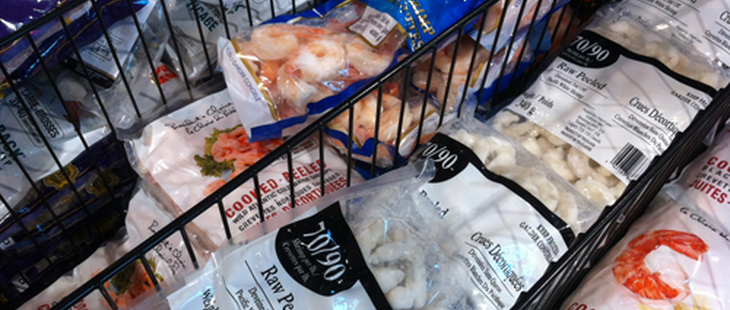
Frozen food exists today because 1920s Toronto wanted it (seriously). But the story begins on the Atlantic coast. During the First World War the maritime fishery was going through its biggest boom. The allied armies needed to eat, but war-ravaged Europe had neither the industrial capacity nor the land to grow and process food. The job fell to fishermen from Newfoundland, Nova Scotia, PEI and New Brunswick. Over a few months the industry expanded exponentially: massive investments were made to procure bigger and better boats and build more processing plants. Within a few short years more fish than ever were being fished. When the war ended and the armies returned home (and soldiers once again became farmers and workers) the demand for Canadian fish disappeared. It was a classic boom-bust scenario.
Enter Toronto. By the twenties the city was on its way to becoming a significant global city. It had factories, theaters, banks, a university, a modern transportation system and was a leading industrial centre in the Great Lakes region (second only to Chicago). But most importantly the ranks of its middle-classes were swelling, and with that grew a demand for new luxury items — like food. Tired of living as their parents had (and eating as their parents had), Toronto’s new professionals wanted to cultivate worldly tastes.
Somewhere, a federal bureaucrat saw an opportunity to marry the collapse of the East Coast’s fishery with urban Toronto’s new desires by turning the same fresh Atlantic fish that fed the armies into a coveted commodity. Their first try was costly and not particularly successful: the federal government paid for a refrigerated train to transport fresh fish to the city from Halifax.
The product was superior to the salted fish that the city had eaten before, but not by much. Transportation was too slow and refrigeration technology too unsophisticated to really deliver fresh, tasty fish.
But in 1926 Archibald Huntsman, the director of the small Atlantic Experimental Station of the auspiciously named Biological Board of Canada, had a Eureka moment. Realizing that if you froze a fish just a few hours after it was caught you could deliver it anywhere in the the country, maintain freshness, and not worry about transportation time. Within a year he developed the modern freezing technology we still use today.
The next challenge was to build a business. It took three years, but in 1929 the Board began shipping frozen fish to Toronto. To ensure quality, the government decided that one store would be the exclusive outlet: Robert Simpson Co., or Simpson’s (now the Bay at Yonge and Queen). Sold first in 1929, the product launch attracted substantial attention when customers were brought to the basement of Simpson’s, given samples and taught how to cook something from frozen. Allegedly it tasted unlike, and better, than any fish ever consumed in Toronto before.
It was an unmitigated success. Even though there was a 50% premium over other fish, Simpson’s could not keep up with demand. It was easy to prepare, well marketed towards the ‘discerning house-wife’ and innovative; in short, it was the perfect middle-class good. In the first year alone, 600 tonnes were sent to Toronto, and in 1930 the Board sent 1000 tonnes. They expanded their product line to include not just halibut, but cod, russet, flounder, gray flounder, mackerel, swordfish and cusk and began shipping as far away as Calgary.
Though the fish tasted better but it certainly didn’t look appetizing: five inches long, three inches wide, and a half-inch thick it was compressed, wrapped in wax paper and boxed. In no way did the product resemble actual fish. But processed food was a novelty and that was undoubtedly part of the appeal.
Even so, the entire project failed. In its origins the scheme was a perfect model of a well-executed government program — Atlantic Canadians needed jobs, middle-class Torontonians wanted a new modern luxury good that could be found nowhere else in the world. But after a few years of running the program (at a profit, too) the government decided to divest itself of the business and privatize. The product was too futuristic: stores jumped at the opportunity to carry the Ice Fillets, but few had freezers and the fish melted on the shelves. Meanwhile, the manufacturers who were eager to make a buck began to use inferior stock. In a matter of a few years frozen fish were known for being tasteless, unsafe and tough.
It would not be until after the Second World War, when people and stores could afford freezers, that frozen foods took off again in Canada. By then, however, most of the goods were imported from the United States; the Canadian industry never really recovered. Either way, the frozen pizza owes an existential debt to Toronto.
Simon Wallace writes for Toronto Standard including the Standard Historical Society column. Follow him on twitter: @SimonWallace














